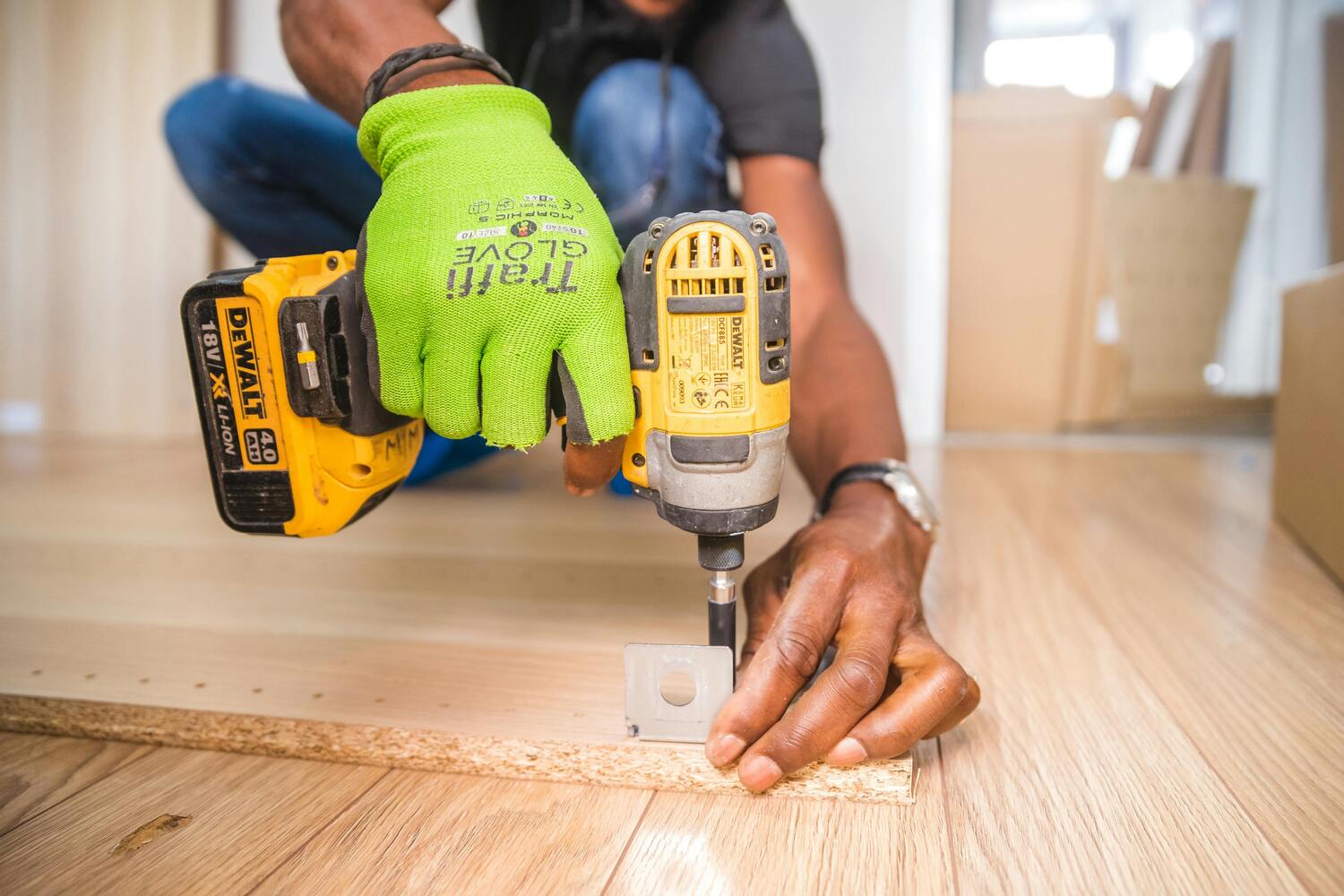
Do-it-yourself residence initiatives have exploded in reputation due to YouTube tutorials, Pinterest boards, and a way of private satisfaction that comes with doing the work your self. Whether or not it’s a customized backsplash, a built-in bookcase, or a whole rest room makeover, the DIY route appears to vow two issues: value financial savings and added worth.
However right here’s the cruel fact: not each residence challenge boosts your property’s value. In reality, many do the alternative. From shoddy workmanship to overly private design selections, some well-meaning DIYs can flip off potential patrons, set off inspection crimson flags, and even require costly fixes earlier than your house can hit the market. In case you’re not cautious, your “enhancements” could also be quietly dragging your house’s worth down.
Right here’s a more in-depth take a look at how your DIY efforts could be sabotaging your greatest funding.
Why Your DIY Initiatives May Be Decreasing Your Dwelling’s Worth
1. Lack of Permits Can Be a Deal Breaker
One of the frequent errors householders make is skipping permits to save lots of money and time. Constructing a deck, changing a storage, or putting in electrical wiring with out correct authorization may appear innocent, however it will possibly grow to be a nightmare throughout resale.
Patrons (and their lenders) need proof that work was finished to code. In the event that they uncover unpermitted work throughout an inspection, they might stroll away or demand a steep low cost. Worse, you could be required to undo the work or pay fines earlier than promoting. Regardless of how stunning the end result, unpermitted DIY initiatives ship a message: “We reduce corners.” That’s not often an excellent look in actual property.
2. Beauty Overhauls That Don’t Match the Remainder of the Home
Painted brick fireplaces, geometric accent partitions, or stylish wallpaper might look nice on social media, but when they don’t match the general aesthetic of your house, they’ll make your house really feel disjointed and even chaotic.
Patrons aren’t simply taking a look at one room. They’re making an attempt to examine the entire residence. When one space screams DIY trend-chasing whereas the remainder is builder-basic, it creates cognitive dissonance. As a substitute of feeling impressed, patrons really feel confused. Design cohesion issues. When your upgrades conflict with your house’s authentic type, it chips away at perceived worth.
3. Poor Workmanship Indicators Greater Issues
There’s nothing incorrect with tackling initiatives your self…except the standard is noticeably off. Crooked tile traces, uneven flooring, dripping caulk, or misaligned cupboards don’t simply look dangerous. They make patrons marvel what else could be incorrect beneath the floor.
Even small imperfections recommend that the work wasn’t finished professionally, which might elevate issues about structural integrity or security. Many patrons would somewhat see an untouched, outdated house than a poorly executed replace they’ll need to undo. In the true property world, dangerous DIY is worse than no replace in any respect.
4. Over-Customization Limits Attraction
Turning your spare bed room into a house theater with built-in stadium seating? Spectacular, however provided that the following purchaser needs the identical factor.
Extremely customized renovations—assume built-in wine cellars, themed youngsters’s rooms, or elaborate fish tanks—usually have area of interest attraction. They may excite a small subset of patrons however flip off the bulk who need flexibility or want a clean canvas. What you see as distinctive, others might even see as a trouble to undo. Over-customization can shrink your pool of patrons and drag down provides.
5. Inappropriate Materials Selections
Selecting the incorrect supplies, both for value financial savings or type preferences, can backfire. Laminate counter tops as an alternative of granite, stick-on flooring tiles, or utilizing exterior paint inside might lower your expenses now, however they’ll damage your house’s perceived high quality.
When patrons stroll by way of your house, they’re evaluating finishes as a lot as format. DIY shortcuts usually reveal themselves by way of contact and texture. Low-cost supplies really feel like, nicely, low cost supplies. And in a aggressive market, even small particulars can sway a purchaser towards one other property that feels extra “move-in prepared.”

6. Practical Flaws That Undermine Livability
DIY upgrades generally sacrifice performance for kind, or vice versa. For instance, flattening a wall to create an open idea may go away too little storage. Changing a bathtub with a walk-in bathe may make the house much less interesting to households with younger children.
Even one thing like a poorly put in kitchen island that disrupts workflow can damage worth greater than assist. Dwelling patrons don’t simply need upgrades. They need upgrades that make sense. In case your challenge reduces utility or livability, you could be reducing your house’s worth with out realizing it.
7. Inconsistent High quality All through the Home
In case your newly renovated rest room seems to be like a showroom however the remainder of the house hasn’t been touched in many years, patrons might even see a crimson flag as an alternative of a spotlight. They’ll marvel why one room obtained consideration, and what points could also be hiding elsewhere.
Consistency in high quality and elegance helps create a way of steadiness. Inconsistencies could make a home really feel disjointed and incomplete, which might have an effect on the customer’s perceived worth and the appraiser’s, too.
8. Overbuilding for the Neighborhood
Even when your DIY challenge seems flawlessly, it may nonetheless damage your house’s worth if it pushes your property outdoors the norm for the world. Including a luxurious spa rest room or a second-story addition in a modest neighborhood received’t essentially improve your resale worth.
Why? As a result of appraisers and patrons use “comparables” (comps) from close by properties to evaluate worth. In case your upgrades can’t be supported by related gross sales within the space, you might not recoup your funding, particularly if the adjustments have been finished DIY as an alternative of by way of a licensed contractor.
9. DIY That Appears to be like Like a Crimson Flag to Inspectors
Dwelling inspectors are educated to identify indicators of beginner work, and once they do, they usually dig deeper. That may result in an extended checklist of points on the inspection report—every little thing from defective wiring to plumbing errors—and a rising sense of purchaser unease.
Even minor issues can grow to be bargaining chips throughout closing, or worse, deal-breakers. If your house turns into referred to as “the one with the sketchy basement reno,” don’t be stunned in the event you get lowball provides or none in any respect.
DIY Can Be Rewarding, However Know The place to Draw the Line
There’s nothing incorrect with taking pleasure in your house. Portray partitions, changing fixtures, and even laying tile could be empowering and economical. However not each challenge needs to be a weekend experiment. Some jobs require experience, permits, and long-term considering, particularly if resale worth is a precedence.
Earlier than you dive into your subsequent DIY, ask your self: Will this make my residence extra purposeful? Will it attraction to future patrons? Is the standard as much as customary? And maybe most significantly, ought to I go away this one to a professional? As a result of whereas DIY can lower your expenses at the moment, the incorrect challenge can quietly value you 1000’s tomorrow.
Have you ever ever regretted a DIY challenge or walked away from a home due to one? Share your experiences within the feedback!
Learn Extra:
Is Your Dwelling a Ticking Time Bomb of Unnoticed Repairs?
Your Information to Saving Cash on Important Dwelling Repairs

